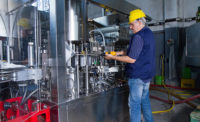One thing all portable gas detectors have in common is alarm tones.
One alarm tone is used to indicate gas hazards, albeit with varied frequency or volume for Low/High/TWA/STEL warnings. An alarm for carbon monoxide (CO) sounds the same as an alarm for Lower Explosive Limit (LEL), oxygen (O2), and hydrogen sulfide (H2S).
The purpose: warn users when invisible gas hazards reach “alarm worthy” levels so workers can take appropriate safety action.
With use adoption of multi-gas monitors, the side effect has been more alarms. Many alarms are for CO and LEL, which can have serious safety implications. In the past few years, one question keeps popping up. “Why don’t you have a different alarm tone for different gases?”
Are gas detectors destined to become another boy who cried wolf?
Not the best solution
A different tone is not the best solution to a multiplicity of gas alarms. Each time a monitor goes into alarm, a potentially fatal gas hazard is present. Custom alarm tones or smart voice commands are possible, but all alarms warn you of dangerous conditions.
How to combat alarm fatigue
If your team has asked for different alarm tones for different gases, you’re facing gas detection alarm fatigue. Fight back by taking these three steps:
- Review your data: How many alarms do workers experience in a shift? Do they know what action to take when an alarm sounds? Employees must change their behavior when they hear an alarm. Investigate and address false alarms so workers know that when an alarm sounds, they need to trust it and take action.
-
Make necessary changes to alarm set points: You can make changes to alarm set points. Manufacturers use default settings that might not be appropriate for your industry or application. Before you change alarm setpoints, research your company’s guidelines and OSHA safety guidelines. Alarm setpoints are often established lower to account for the time it takes for a sensor to respond to the gas (for example, time to 90% of the reading, “T90”). A monitor will alert a user of a high gas concentration sooner, even though the monitor’s reading hasn’t quite reached the actual concentration.
When adjusting your high alarm, pay special attention to your low alarm. If you adjust your high alarm set point, but keep your low alarm set point as-is, this won’t help. The low alarm is typically less intense, but it sounds the same to the untrained ear. New acknowledgeable gas alerts help by allowing users to acknowledge a low alarm and continue to work for a limited time in certain conditions without the constant noise.
After making adjustments, explain the changes and the behavior you expect moving forward. If at any time the discussion heads toward “just ignore that,” go back to the drawing board. This is a set-up for tragedy. - Make changes to your processes: Change the way people work, isolate them from hazards, replace the hazards, or physically remove hazards. The hierarchy of controls is a great way to improve safety.
If your workers ignore lifesaving alerts, educate them on the function and purpose of gas detectors – for when the real wolf comes prowling.






